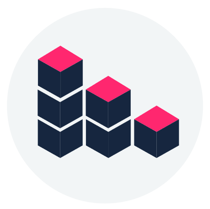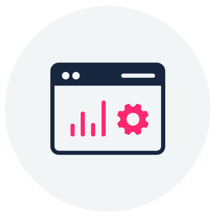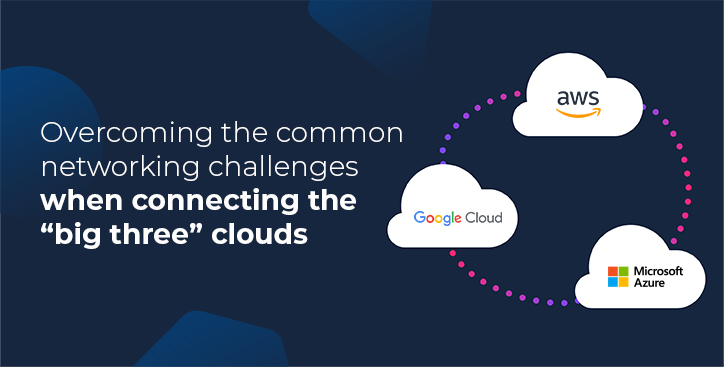5 Ways To Align Your Business With The New Interconnected Enterprise Model
By Alex Hawkes|1 February, 2021

Enterprise operations are becoming increasingly complex ecosystems, involving new technologies, larger supply chains and more partners than ever before.
In a new report called ‘Building Tomorrow’s Interconnected Enterprise’, Console Connect and Applied Futurist Tom Cheesewright present a new interconnected enterprise model for the ecosystem-based future, where successful organisations will operate as a complex web of interactions rather than a monolithic whole.
At the heart of the new interconnected enterprise model are five critical characteristics, which we’ve summarised in this blog…
1. Clearly defined functional units
 Every component of the ecosystem needs to have a clearly defined function, with understood inputs, outputs and interfaces – somewhat like a Business Canvas.
Every component of the ecosystem needs to have a clearly defined function, with understood inputs, outputs and interfaces – somewhat like a Business Canvas.
These definitions are critical to future flexibility and maintaining transparency. If you imagine the organisation like a box of building blocks, each has its place in the next structure you are trying to build.
Without sizing these blocks, you are building blind. Critical to each unit definition is understanding:
- Its core capability: What does this unit deliver for the business?
- Its inputs: What are the requirements for this unit to function effectively?
- Its outputs: In what format does this unit deliver?
- Its metrics: How can we know at a glance how well this unit is functioning?
2. Low friction interfaces.
 The foundation of the interconnected enterprise is low friction interfaces. Inside the organisation, it relies on efficient communication between functions and business units. Outside the organisation it sends and receives information up through the supply chain, down through its channels to market, and out through its partners with minimal friction.
The foundation of the interconnected enterprise is low friction interfaces. Inside the organisation, it relies on efficient communication between functions and business units. Outside the organisation it sends and receives information up through the supply chain, down through its channels to market, and out through its partners with minimal friction.
Where possible it leverages APIs and machine to machine communication to automate interactions.
Not only do these interfaces allow the organisation to operate as a network without high overheads in communication, they also allow the organisation to add new components to the ecosystem rapidly – a critical part of the flexibility that is the main driver for the ecosystem model.
Key questions for your interfaces include:
- How easily does information pass into and out of your organisation?
- How easily does information flow between functions in your organisation?
- How much manual intervention is needed to process data or pass it through the chain?
- Are interfaces manual when they could be purely digital?
- How fast can interfaces be established and broken, or scaled to meet changing demand?
3. Globally and digitally distributed resources
 The interconnected enterprise recognises the opportunities created by falling barriers to access the right technologies, skills and partners wherever they maybe.
The interconnected enterprise recognises the opportunities created by falling barriers to access the right technologies, skills and partners wherever they maybe.
Resources might come from inside or outside the organisation, but with low friction communications the operational differences are minimal. If it adds value, anyone or anything – anywhere - can form part of the ecosystem.
Key questions for your resources:
- Is your team open-minded about sourcing assets and skills from beyond your historical range of suppliers?
- Do your procurement rules allow you to take advantage of the most competitive and innovative suppliers based on size and location?
- Do you have the governance capabilities, skills and tools to manage the resulting complexity - e.g. fast-changing APIs?
4. Distributed power
 A traditional hierarchy does not work well in an ecosystem enterprise. Instead the organisation operates with distributed decision making where possible. Power is devolved to the leaders of functional units to drive their own performance and success, with encouragement for them to operate in an entrepreneurial fashion.
A traditional hierarchy does not work well in an ecosystem enterprise. Instead the organisation operates with distributed decision making where possible. Power is devolved to the leaders of functional units to drive their own performance and success, with encouragement for them to operate in an entrepreneurial fashion.
From there, power is further devolved to the edges of those organisations so that they can maximise responsiveness to their customers and partners.
Devolving power like this requires:
- Skills development: Everyone needs to have the capabilities to exercise the autonomy and responsibility they are handed
- Clear rules: Everyone needs to know the limits of their autonomy and responsibility
- Support: Clear lines of communication for when people reach those limits
- Trust: Every manager needs to have the confidence of, and confidence in, their subordinates
5. Accelerated decision-making
 For critical strategic decisions, leaders at the core are fed with rich information, aided by the transparency of the organisation created by the low-friction interfaces.
For critical strategic decisions, leaders at the core are fed with rich information, aided by the transparency of the organisation created by the low-friction interfaces.
Leaders need both strong information flows and the tools to process and analyse that information effectively to drive better decision-making.
Factors leading to better decision-making:
- Data: Access to the most important metrics from functional units, as well as customer, financial and market information
- Tools: Software tools to aggregate, analyse, and present data in compelling forms that aid both decision-making and communication with peers and boards
- Skills: Data literacy and the skills of data manipulation, from the fundamental concepts through to the technical skills with current software
- Time: Leaders need the time to make good ,evidence-based decisions, offloading some of the operational load to functional units

.jpg)





.jpg)

